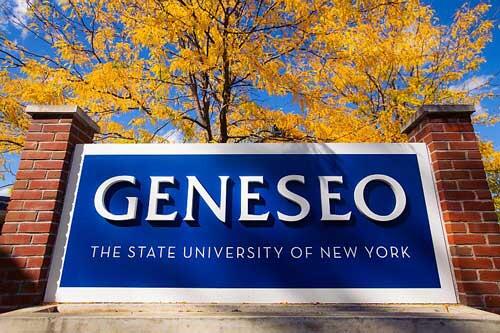
On the heels of his third annual Adirondack Challenge this summer, Gov. Andrew Cuomo must be delighted with Hollywood's support for his outdoor tourism agenda. Two movies in the last 10 months are encouraging folks -- politely -- to go take a hike. First, it was "Wild," inspired by Cheryl Strayed's Pacific Crest Trail memoir, and now, "A Walk in the Woods," based on Bill Bryson's Appalachian Trail experience.
With a rich variety of outdoor assets, the longest fall foliage season in the Northeast, and hiking's new-found popularity, New York's Adirondacks stand to benefit from a perfect storm of publicity. But not without risk to this amazing natural -- and national -- treasure.
As an avid hiker and aspiring Adirondack 46er intent on climbing all 46 high peaks over 4,000 feet, I can attest there's no better exercise. I enjoy being on the trail, breathing fresh air and always wondering what lies ahead. Yet, as a geologist, I am especially attentive to the physical surroundings. I can't help but notice changes in trail conditions caused in part by the impact of heavy use.
Clearly, more boots on the ground is good for health and fitness as well as local economies, but this latest fascination with hiking can lead to unintended consequences. Consider "the Wild effect." Following a 30 percent jump in permit requests, the Pacific Crest Trail Association in February capped the number at 50 per day to limit damage to the ecosystem and preserve a sense of solitude for hikers. Or "the Bryson bump" which Appalachian Trail Conservancy officials attribute to a 60 percent increase in long-distance hikers on the AT, as it's known. Now bracing for another wave from the "Walk in the Woods" film, Baxter State Park officials in Maine are considering the unthinkable: moving the northern terminus and iconic finish of the Appalachian Trail off Mount Katahdin to control overcrowding and environmental impact at the summit.
While few of us can leave family or work to spend months on 2,000-plus mile trails, opportunities abound for day hikes and weekend excursions in our state's own backyard. Not surprisingly, parking lots in the Adirondacks are full of cars displaying license plates from bordering states and beyond. Any spillover increase in hikers -- call it "the Tinseltown trickle" -- could lead to problems for our Adirondacks. Soil erosion from trail overuse can create long-lasting environmental effects that are difficult -- or impossible -- to overcome, particularly in fragile ecosystems near the summits. Inexperienced or careless hikers swayed by Hollywood's glamorization may underestimate their knowledge or capabilities, straining limited emergency rescue and health care services. A sudden influx of vehicles and people may jeopardize cooperative agreements years in the making between private land owners and public groups.
Certainly, change is inevitable, especially for a place where trails are used as frequently as in the Adirondacks. Yet with each hike, I am continually amazed by the work of state agencies and nonprofit organizations to repair and maintain trails -- as well as their commitment and advocacy to educate enthusiasts and encourage practices that preserve access and enjoyment for all.
Generating $1.29 billion in direct spending and $159 million in state and local taxes last year, the Adirondack region is worthy of investment to keep it forever wild. With continued financial and environmental stewardship, New York can handle Hollywood's push to hit the trails.
- Benjamin Laabs, associate professor and chair of SUNY Geneseo's Geological Sciences department, specializes in glacial geology, paleoclimate and geomorphology research.
Article originally published by the Times Union. Reposted with permission.